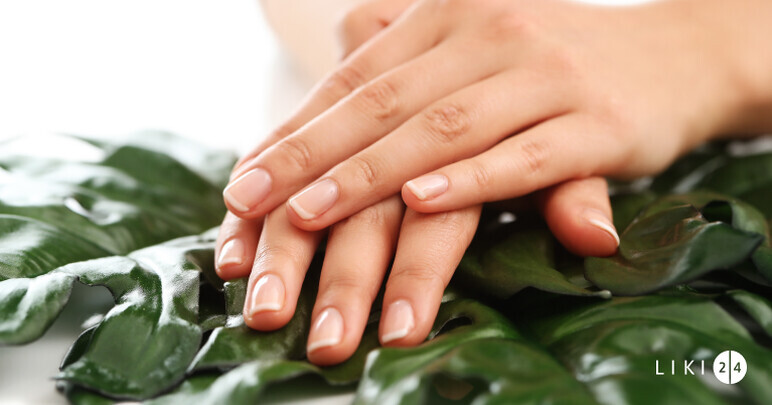Perles de tapioca, 1kg, Sanovita
Tapioca



Secrets d'une protection solaire fiable : Comment préserver la jeunesse de la peau


Les bases d'une digestion saine : ce qui contribue à la santé de l'estomac


Protéines pour la croissance musculaire: aliments riches en protéines, alimentation correcte

Description Tapioca
Les informations de la section Questions et réponses ont été rédigées par l'équipe Liki24.co.uk et sont basées sur la brochure officielle du fabricant.
Le tapioca est une substance amylacée extraite de la racine du manioc, une plante originaire d'Amérique du Sud. C'est un ingrédient populaire dans de nombreux types de plats, y compris les desserts, les boissons et les plats salés.
Les perles de tapioca sont la forme la plus populaire de tapioca. Elles sont fabriquées en transformant la racine de manioc en une fine farine, qui est ensuite mélangée à de l'eau pour former une pâte. La pâte est ensuite roulée en petites boules qui sont ensuite séchées et emballées pour la vente. Les perles de tapioca sont souvent utilisées dans le bubble tea et d'autres desserts asiatiques.
L'amidon de tapioca, également connu sous le nom de farine de tapioca, est une autre forme courante de tapioca. Elle est souvent utilisée comme épaississant dans les recettes et peut être utilisée en pâtisserie comme alternative sans gluten à la farine de blé. La fécule de tapioca est également utilisée dans la fabrication de certains types de pâtes et d'autres aliments transformés.
Quels sont les avantages du tapioca pour la santé?
Le tapioca présente plusieurs avantages potentiels pour la santé, notamment :
- Sans gluten : le tapioca est naturellement sans gluten, ce qui en fait une bonne option pour les personnes souffrant de maladie cœliaque ou d'intolérance au gluten.
- Pauvre en graisse : le tapioca contient peu de graisse, ce qui peut être utile pour les personnes qui veulent perdre du poids ou manger sainement.
- Il est une source d'hydrates de carbone : le tapioca est une bonne source d'hydrates de carbone, qui peuvent fournir de l'énergie au corps.
- Contient du fer : Le tapioca contient de petites quantités de fer, qui est un minéral important pour le corps.
- Contient du calcium : le tapioca contient également de petites quantités de calcium, qui est important pour la construction et le maintien d'os et de dents solides.
- Contient de l'amidon résistant : le tapioca contient de l'amidon résistant, un type de glucide qui résiste à la digestion dans l'intestin grêle. L'amidon résistant peut contribuer à une digestion saine, réduire le taux de sucre dans le sang et améliorer la sensibilité à l'insuline.
Quelles sont les valeurs nutritionnelles du tapioca ?
Le tapioca est une très bonne source de glucides et contient également de petites quantités de graisses, de protéines, de fibres et d'autres nutriments. Ainsi, les valeurs nutritives pour 100 g de perles de tapioca séchées sont les suivantes :
- Calories : 358;
- Graisses : 0,02g;
- Sodium : 1 mg;
- Glucides : 88,7 g;
- Fibres alimentaires : 0,9 g;
- sucre : 3,35 g;
- Protéines : 0,2 g.[3]
Le tapioca a-t-il des effets négatifs sur la santé?
Même si le tapioca est généralement considéré comme sûr et sain lorsqu'il est consommé avec modération, il existe quelques effets négatifs potentiels sur la santé dont il faut tenir compte :
- Haute teneur en glucides : Le tapioca est un aliment riche en glucides, ce qui signifie qu'il peut entraîner une augmentation de la glycémie chez certaines personnes. Cela peut être un problème pour les personnes souffrant de diabète ou de résistance à l'insuline, ainsi que pour les personnes qui essaient de contrôler leur poids.
- Riche en nutriments : bien que le tapioca contienne quelques vitamines et minéraux, il n'est pas particulièrement riche en nutriments. Cela signifie qu'il n'est pas une bonne source de nutriments essentiels comme les protéines, les fibres et de nombreuses vitamines et minéraux.
- Peut contenir des additifs : Certains types de produits à base de tapioca, comme les mélanges instantanés de pudding, peuvent contenir des additifs tels que du sucre, des colorants artificiels et des conservateurs, qui peuvent avoir des effets négatifs sur la santé s'ils sont consommés en excès.
- Danger d'étouffement : les perles de tapioca peuvent présenter un risque d'étouffement, en particulier si elles ne sont pas cuites ou mâchées soigneusement.
- Peut ne pas convenir à certains régimes : le tapioca ne convient pas à certains régimes, comme les régimes pauvres en glucides, les régimes cétogènes et les régimes paléo, car il contient beaucoup de glucides et provient d'une racine riche en amidon.
À quoi sert le tapioca?
Le tapioca a une multitude d'utilisations culinaires dans différentes parties du monde. Voici quelques utilisations courantes:
- Puddings et desserts : le pudding au tapioca est un dessert classique préparé en faisant cuire des perles de tapioca dans du lait ou du lait de coco avec du sucre et d'autres ingrédients.
- Bubble Tea : les perles de tapioca sont un ingrédient important du bubble tea, une boisson taïwanaise populaire qui contient généralement du thé, du lait, des arômes de fruits et des perles de tapioca mâchées.
- L'amidon de tapioca est souvent utilisé comme épaississant dans les soupes, les sauces et les sauces de cuisson, ainsi que dans les pâtisseries comme les tartes et les puddings.
- Alternative sans gluten à la farine de blé : la fécule de tapioca est un ingrédient courant dans la pâtisserie sans gluten, car elle peut être utilisée à la place de la farine de blé pour lier les ingrédients et créer une texture plus légère.
- Nouilles : La fécule de tapioca est également utilisée pour la fabrication de certains types de pâtes, notamment les vermicelles et les nouilles de riz.
- Des plats savoureux : Dans certaines régions du monde, le tapioca est utilisé dans des plats savoureux comme les ragoûts et les currys.
En général, le tapioca est un ingrédient polyvalent qui peut être utilisé dans les plats sucrés et salés ainsi que dans une grande variété d'aliments transformés.
Caractéristiques
| Marque | Biovegan, La Finestra Sul Cielo, Nature4Life, Niavis, Pronat, Sanovita |
























